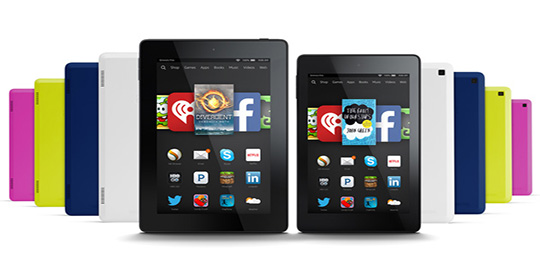
Technology Observatory September 15 - 21
This week's Technology Observatory brings you the following stories:
● Google unveils Android One in India: all the details
● The next novelty from WhatsApp leaked: enabled to make and receive voice calls
● Microsoft buys Minecraft for $2.5 billion
● Apple beats its own record taking 4 million iPhone 6 pre-orders in 24 hours
● Microsoft to unveil Windows 9 on September 30
● Google puts solar drones to use: Internet in remote areas
● Orange justifies the purchase of Jazztel with the rise of convergence and the end of the crisis
● Ads reach Instagram (starting with the United Kingdom)
● Apple to unveil new products on October 21
● It's official: Kindle Voyage is the new e-reader from Amazon
● New Kindle Fire HDX 8.9, HD 6 and Fire HD 7
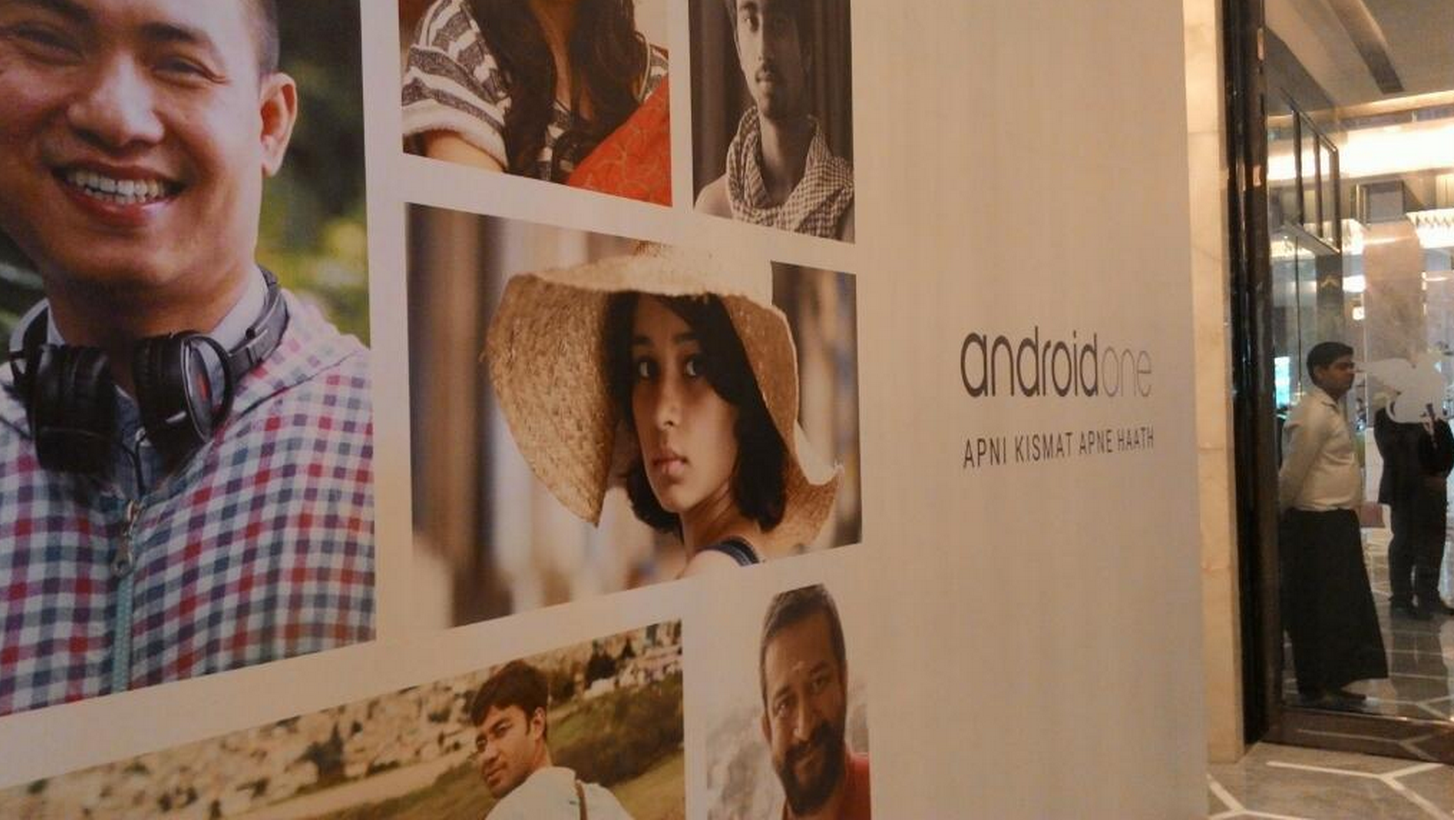
This week Google's Sundar Pichai officially announced the arrival of Android One in India at a special launch event. It's a project in which the search engine will try to transfer the Nexus experience to Android devices for around INR 6,399, approximately €89. Presented at the last Google IO, Android One is an attempt to offer mobile devices, courtesy of manufacturers like Spice Mobiles, Micromax and Karbonn, updated like the Nexus terminals to the latest version (and Android L coming soon) with a set of decent specifications. It was also announced that Qualcomm will be joining the Android One project, along with Acer, Alcatel Onetouch, ASUS, HTC, Intex, Lava, Lenovo, Panasonic and Xolo. In India only 29% of cellphone users own a smartphone, a ridiculously low share compared to Western countries. Which is why the engineers at Mountain View have seized the opportunity to spread the use of Android. The Indian market comprises 920 million mobile device users. Google has announced that it will deploy Android One in Indonesia, the Philippines and other South Asian countries (Bangladesh, Nepal, Pakistan and Sri Lanka) by the end of 2014, but it has its sights set on even further expansion in 2015. Seven new languages are now officially supported, including several Hindi variants. This support also includes voice commands. Flipkart, Snapdeal and Amazon will be the distributors of smartphones with Android, starting today.
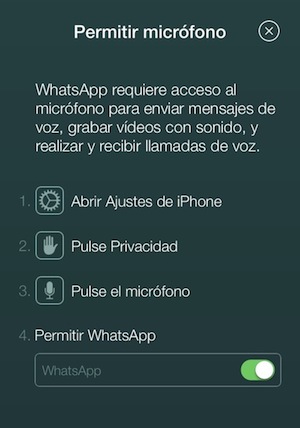
It seems the latest WhatsApp update laid the foundations for a new capability, as yet not operative. Apparently, WhatsApp will soon offer voice calls. Although the description of the latest update doesn't actually mention the new capability, everything suggests it will be rolled out very soon. The voice call novelty has been revealed in a message that appears in the application for iOS when the WhatsApp access to the terminal microphone is disabled. You can check it out for yourself by disabling the access from Settings – General – Privacy – Microphone – WhatsApp (disabled). Next, if you enable the messaging app again and click on the microphone icon to send a voice message, you'll see the message shown in the screen capture above, which clearly indicates that WhatsApp lets you make and receive voice calls (though not yet operative) and no doubt means that the WhatsApp guys will soon let users of the app access this new capability. Clearly an interesting move for an application with more than 600 million users worldwide, and one which might persuade it to go all out to conquer the voice call market.
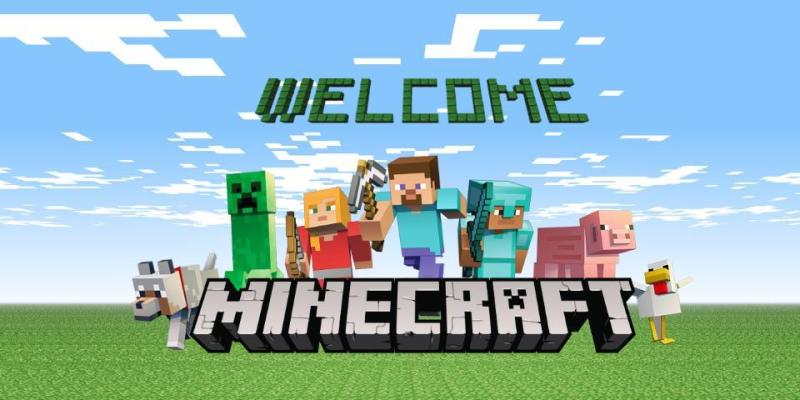
After several days of rumors and speculation the deal has finally been closed. Microsoft is to buy Minecraft and the company that made it, Mojang. The indie company Mojang and the popularity of its founder Notch have both grown considerably in recent years, to the point where they're now a force to be reckoned with in the video game market, with millions of downloads from the platforms on which the game is available. Microsoft and Mojang have both published letters explaining the reasons for the deal, although Notch himself hasn't said where he stands on the issue. One of Microsoft's principal interests in Mojang is the incredible following and popularity of Minecraft, far beyond anything anyone has ever seen in the gaming world. Another reason for its interest is the possible attraction of more developers to Windows platforms. Minecraft was created five years ago as an indie game in which players can create and change the setting however they want. An entire generation has grown up with Minecraft and the game just keeps on growing: it's easy to grasp the rules, it has an infinite gameplay, and if the visitor figures for the gameplay videos on YouTube are anything to go by, people tend to get very attached to the game. More than 54 million copies have been sold, demonstrating the extraordinary success of this fascinating game. Stop press: Notch has just published a statement explaining his departure after the news broke about the deal with Microsoft.
New iPhone, new record. That certainly seems to be the way it goes every time the Cupertino guys launch a new phone. On this occasion the duo formed by the iPhone 6 and the iPhone 6 Plus have managed to take 4 million units (in the pre-order period) in just 24 hours, thus creating a new sales target to beat. Tim Cook himself confirmed the figure in an official announcement, adding that many of the orders will have to wait until October to be sent out, which clearly shows that the demand has even outstripped Apple's own expectations. With orders way ahead of the 2 million for the iPhone 5 when it was released, it nevertheless remains to be seen whether the new phones will beat the 9 million orders placed in the space of just one weekend for the 5s and 5c. Will they do it?
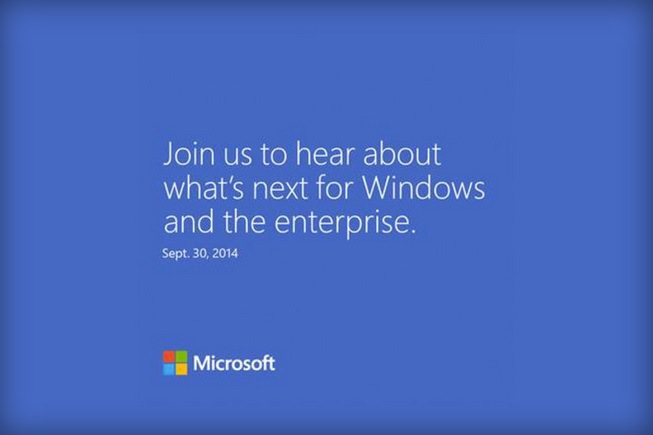
After weeks of hearing rumors that Microsoft was very close to unveiling "the future of Windows", the next version and major update of its operating system, we finally have a date for the event, and for the first announcement about the most important product since the company's foundation, courtesy of its new CEO, Satya Nadella. A special event is to be held in San Francisco on September 30 to explain what's in store for Windows, so we're about to find out about the new Windows 9 and all its new features. The Redmond-based company has started sending out invitations to the specialist media, like the one shown in Verge, which means we now have a date in our calendar for the next Windows event. Once again, there have been countless leaks about Windows 9 and the specifications Microsoft plans to include in its next major update of the operating system for desktops: from the inclusion of Cortana, Microsoft's virtual assistant only present in Windows Phone so far, to the return of the Start Menu and the loss of the Charm Bar along the side. Some rumors even suggest that the upgrade to Windows 9 will be free for Windows 8.1 users, the most recent version of the platform. There's no doubt that since the first update after Windows 8 Microsoft seems to have entered a period of rectification about what it wants to do with its platform. Yes, adapting to touch screens is crucial at this moment in time, but that's no reason to completely abandon the more traditional users who like their mouse and keyboard. Windows 9 will focus on these users, and it certainly promises to be a change for the better for the general public. Come September 30, all will be revealed about the new Windows. In the meantime, the leaks we've heard about so far give us every reason to be very optimistic.
Google is about to run tests with drones in an attempt to deliver connectivity to users in remote places where there probably wouldn't be any other form of Internet access. The idea has quite a lot in common with the one they've already launched with Project Loon, except in this case it's about drones rather than balloons. The tests will start in New Mexico, United States, with drones powered by solar energy. There's not much information on the models in question, but let's not forget that Google pipped Facebook at the post when it acquired Titan Aerospace, a company specializing precisely in unmanned aerial vehicles that rely on the sun for power. At the time, it wasn't clear what Google would do with the company, but now it's obvious that the first use they've found for it is delivering connectivity. In fact, Google has already asked for FCC permission to run the tests, given that they will have to broadcast on frequencies already in use and will therefore need the green light from the agencies involved. To get an idea of what the first commercial model by Titan, called Solara, is capable of, simply consider how long it can stay aloft without touching the ground: more than five years. That's why Google was so keen to lay its hands on these vehicles: they're the ideal companion for its Project Loon balloons.
After announcing, its offer of €3.4 billion to buy out Jazztel, now the French company Orange has openly justified its offer. There'd been talk about a possible deal for months, especially since Vodafone acquired ONO, but things finally came to a head when Jazztel and Yoigo entered negotiations. The price for this sudden interest in taking over Jazztel has resulted in a cost that no one would have dreamed of months ago, but which has steadily risen as time as has gone by. Even so, for Orange the price it will pay for Jazztel, if the offer is accepted, is more than justified by increasing convergence in the Spanish market and the supposed end of the economic crisis in this country. Francisco Colom, financial director of Orange Spain, had already made it clear that Spain is the French group's second market, and now they have ratified it with the acquisition, still to be closed, of Jazztel. As we've already said, what Orange is buying is not so much customers, although there are quite a few of them, as a fiber-optic network to homes, still not fully deployed but more advanced than its own. However, what really clinched it for Orange in deciding to make an offer for Jazztel was the situation in Spain. They see Spain as leaving the economic crisis behind, which favors investment. In addition, the telecommunications market is clearly headed toward convergence, where the company had good offers but was lagging behind Movistar and Vodafone in the deployment of latest-generation fixed-line networks. This is precisely where the synergies between Orange and Jazztel commence, because at the moment Orange only reaches 800,000 homes with its fiber-optic network, shared with Vodafone, while Jazztel's fiber runs through more than 2.2 million homes. Both companies had set a target of reaching 7 million homes each by 2017, but following the acquisition the new plan is to reach 10 million homes. Orange has also pointed out the savings in terms of deployment that that will be achieved by the agreement with Jazztel, if that company does not now break things off, to share the vertical markets. Moreover, Orange will hardly have to deal with closing Jazztel stores as nowadays they're very few and far between. And neither will it have the cost of switching Jazztel customers' mobile coverage as they're already under Orange coverage. Besides, Jazztel customers will receive 4G access, something which the virtual networks have yet to pull off. As for the workers of both companies, Orange has said the impact will be minor, with a surplus of 400 people at the most. The total value of the synergies, principally concerned with the networks, is reported to be worth €1.3 billion. If the acquisition of Jazztel is finalized, we'll have witnessed how in less than one year the five big convergent operators in Spain (Movistar, Vodafone, Orange, ONO and Jazztel) have been reduced to three, which to many ears might sound like the creation of an oligopoly. In this respect, Orange has been keen to make it clear that the consolidation of the market that we're seeing now won't lead to higher prices, but it will represent a saving for them and the creation of new business lines through other services and content. We'll have to wait and see the impact of the deal in the coming months, although like the ONO merger with Vodafone the results won't be evident for some time. For now, we do know that in theory Orange seems willing to maintain the Jazztel brand, like it did when it acquired Simyo from KPN.
It's been quite some time since Facebook acquired Instagram for $1 billion. More than two and a half years, in fact, and no sign of any monetization of the application. They haven't started charging for the app, no in-app purchases, no ads... Until now, that is. The most logical option as the property of Facebook was to start showing ads and sponsored content, which is what they suggested at the end of last year. Now the moment has come, with Instagram making it known through a photo uploaded to its own Facebook account. As reported in The Next Web, the United Kingdom will be the first country where Instagram will carry ads. Canada, the United States and Australia will follow suit later on, and it probably won't be long before they start closing deals with other countries, although there are no official dates yet.
Following a hectic few days for consumers with the presentation of the iPhone 6 and Apple Watch, the Daily Dot website has reported that the company will be hosting a new product unveiling event on October 21. They're expected to present the new iPads and announce the availability of the final version of OS X Yosemite for users of the latest version. Like last year, Apple plans to unveil new products in October. In fact, the company usually unveils most of its products in the last quarter of the year. A year ago it was the iPad Mini Retina and the iPad Air. So what do they have in store for us this time? We're sure to see updated iPads featuring A8 and Touch ID, but I wouldn't be at all surprised if there was a new Thunderbolt display and even an 8.1 version of iOS with improvements in iPad layouts.
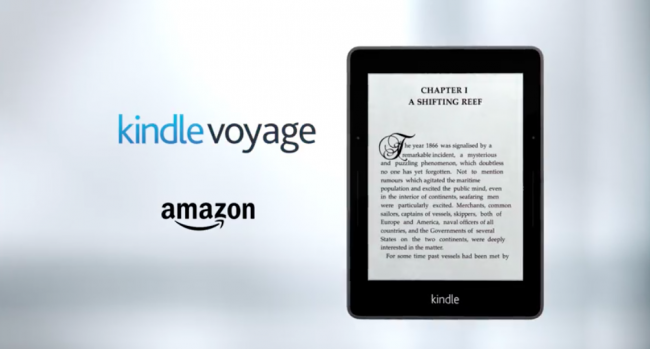
Today the rumor broke that Amazon was about to launch a new product, and a few minutes ago it was confirmed: Amazon has announced what will be the high end of its Kindle e-readers, thus covering a segment sorely needed by the company, namely the high end. The new Kindle Voyage is aimed at consumers looking for a light but powerful e-reader, with top-quality materials and finishes but, most of all, that offers an experience as similar as possible to reading a real book, and Amazon thinks this new Voyage is what the market is looking for. Only 7.6 mm thick and weighing in at 180 grams, the Kindle Voyage is the company's thinnest device, being both slimmer and lighter than its sister Kindle and Kindle Paperwhite. All this with practically the same dimensions – 162 mm in height and 115 mm in width – making it an easy device to hold while reading. As for the display, the aspect that receives the most attention in a reader of this type, it's to be hoped that Amazon has made the leap to a density of 300 pixels per inch, offering a better contrast and 39% more brightness. The latter feature will be automatically adaptable and dimmable thanks to the incorporation of an ambient light sensor, which will create a more satisfactory reading experience as the text will be more legible. The Kindle Voyage is made of black magnesium with a matte finish and has a shiny part at the top of the back of the device to differentiate it from its little sisters. Additionally, the display is glass instead of plastic, with a finish that Amazon has "micro-etched" to make it non-reflective in sunlight. The new device also comes with new technology, in this case PagePress, which will detect the pressure of your fingers through two bezels on the sides of the display, meaning that you can turn the page without touching the screen. Finally, Amazon has added software to offer new functions like Word Wise, which will give you word definitions without having to leave the page. However, one of the best options is the Family Library, which will let you share your purchases of certain types of content – including e-books, naturally – with other family members, as long as they have their own Amazon account rather than sharing your account. The new Amazon Kindle Voyager can already be reserved on the Amazon website in the United States and will ship from October 21. The price for the Wi-Fi version is $199, while the version with free 3G is $219. The original Kindle has also been upgraded and will now come with a touch screen and better processor for $79. The Kindle PaperWhite will cost $119.
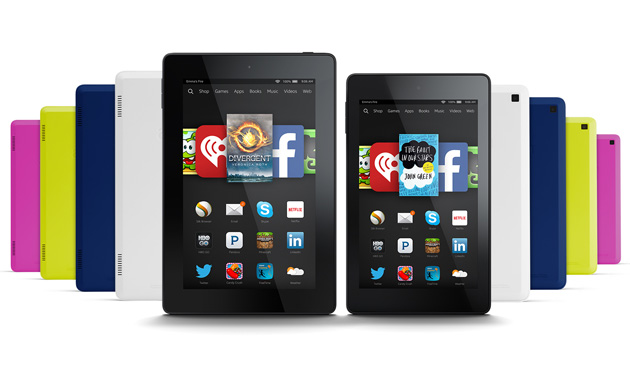
The second half of September is here and so is Amazon with its upgraded line of Kindle Fire tablets. This time, the upgrades affect the inside of its Fire HDX 8.9, an improved 7-inch model and a new 6-inch one. Enter the new Kindle Fire HD 6 and Fire HD 7, two new tablets with 6 and 7-inch displays, WXGA resolution and price tags sufficiently low to make you look twice even if you're not interested in these types of devices. The front of the HD 6 measures 169 x 103 mm, 2 cm lower in height and 2.5 cm in width than the HD 7 (191 x 128 mm), which is an improvement we all welcome. So these are small devices, especially in the case of the 6-inch model, whose dimensions make it almost possible to hold in one hand. The 6-inch model is 10.7 mm thick and the 7-inch model 10.6 mm thick, and they weigh in at 290 and 337 grams. In both cases the display resolution is 1280 x 800 pixels, or 252 and 216 ppi, respectively. They come with a 1.5 GHz quad-core processor, although in fact two of the cores run at 1.2 GHz. This non-specified chipset comes with 1GB of RAM memory. The HD 6 and 7 have two cameras, VGA on the front and 2 MP on the back. No microSD, but they do come with stereo speakers and Dolby sound. The Wi-Fi is the standard 802.11n, although the Bluetooth is compatible with low-energy accessories. There's no 3G/4G option and they don't have the Mayday button that comes with Amazon's higher-end tablets, so any technical difficulties will have to be resolved in the conventional way rather than instantly. Amazon promises up to eight and a half hours of mixed use in the 6-inch model, and eight in the 7-inch version. This is equivalent to 10 and nine hours' reading time respectively, although in practice this autonomy is usually slightly less. Amazon has also upgraded its most powerful tablet, especially the hardware but with improvements to the software as well. The Kindle Fire HDX 8.9 may still be the same size and have the same display, but it's been completely upgraded to offer one of the best value-for-money devices in terms of its specifications. There's been a considerable leap in performance, with the old Snapdragon 800 chipset now replaced by the 805 version, which is the latest novelty for mobile devices from Qualcomm. The enhanced graphic performance – 70% higher than the current model – will be great for getting the most out of the high resolution display that now comes with the 8.9-inch version. The resolution itself is the same, 2560 x 1600 pixels. The model is identical to the current one, still weighing in at 374 grams, which is very light considering its size and 20% lower than other models renowned for this aspect, like the iPad Air. There are also novelties as regards the sound, thanks to the use of hardware classed as Dolby Atmos, making this the first tablet to offer this technology. Factoring in the powerful stereo speakers, you can certainly expect a fairly immersive experience from this device. What's Sangria? Well, it happens to be the latest version of Amazon's operating system for its mobile devices, known as Fire OS. The new HDX, and the other models presented, come with version 4.0. Just so you know, the former version was called Mojito. Sangria comes with support for up to six user profiles, so you can switch between Facebook or Twitter accounts, or between the applications you can access. Another novelty is the FireFly scanning and buying feature, so far only available in Amazon's phone, and there's also a text editor, WPS Office (with access to Word, Excel and PowerPoint). Everything that Amazon has made with Sangria automatically comes with models supported by Android 4.4 and will be available as an OTA update for third-generation Fire models. The new tablets that will benefit from Sangria are Fire HD Kids Edition, Fire HD 6 and Fire HD 7.
On Thursday the news broke that Toshiba was going to withdraw its line of consumer laptops from the Spanish market to concentrate on the corporate market, but in fact the company isn't going to pull out of the consumer market at all, and certainly not out of the Spanish market. According to official company sources, what Toshiba aims to do is restructure its resources and abandon the consumer markets where for one reason or another it just hasn't taken off, and that doesn't include the Spanish market. Thus, the company will maintain its commercial operations in Spain as usual, which naturally includes its entire line of laptops and PCs for the consumer market, as well as its first, recently launched 4K display laptop. Apparently, the company only wants to maintain its consumer line in the strongest countries and build a business model that doesn't depend exclusively on PC sales. Consequently, Toshiba aims to deploy its most important resources in the B2B market, which is expected to yield nearly 50% of the company's total turnover by 2016, and combine that with its active involvement in the Internet of Things by using all of its technology in areas like social infrastructures, the cloud, healthcare and electrical appliances.
